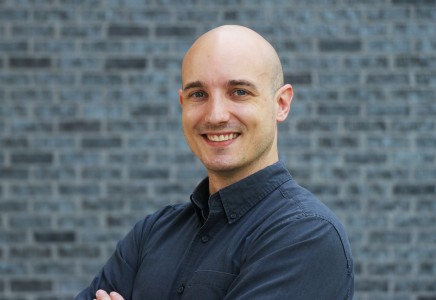Adaptability, flexibility prove invaluable in lab and abroad
During his working hours, one might find Ryan Biraben with his nose deep in an engineering standards manual, looking for the formula to calculate the seismic load of a new piece of equipment. After all, such a focus on detail is important for an engineer working in Jefferson Lab’s Experimental Hall A.
But, when he is not making calculations and performing checks and rechecks, Biraben tends more to the adventurous side. His travels take him far and wide to the most off-the-beaten-path destinations he can find, where he takes care to blend in with the locals.
Biraben—a Jeet Kune Do martial arts instructor—embodies the philosophy that, “Whatever works for you, you should use.” This mentality has served him especially well when required to quickly adapt to unpredicted turns in his career and travels.
For instance, one such adventure that demonstrates well how Biraben applies this life philosophy happened on a solo trip he took in his twenties deep into the Peruvian Andes.
“A lot of things didn’t go quite right on that trip,” Biraben laughs. “First, when I arrived in Cusco, Peru, I learned the airline had lost my bag. I was leaving for the hike the next day, and all I had was one pair of pants, sneakers, and whatever was in my backpack. I would not recommend hiking in the Andes mountains in sneakers.”
While on the mountain trails, Biraben and his crew, which consisted of a porter, a cook, and a guide, had to navigate muddy, washed-out trails that made the journey particularly challenging. The cook suggested that the group hike half a day to his village of Soqma, where they could rest and experience the local culture. There, Biraben was welcomed by the villagers, where he was entertained with stories told by charades, since most villagers only spoke Quechua, and where he dined on a traditional dish called Cuy, which is roasted guinea pig, and also the villagers’ homemade corn beer, Chicha..
“From there, I wanted to get to Machu Picchu,” Biraben recalls. “And the trails were steep and muddy and tough to travel on by foot, so the villagers lent me a horse.”
Biraben’s first job as a child was at a horse farm, so he was comfortable around horses. Yet, this was the first time he had ridden one down a steep, slippery slope of a mountain while wearing muddy, grip-less sneakers.
Once down the mountain, Biraben and his guides started on foot up the ancient Inca trail toward the Andean cloud forest and Machu Picchu—an arduous hike that would take a couple of days.
“I twisted my ankle at the start of the hike,” he groans. “It was a long, tiring hike for me, and when we get to the top, my guide points around this bend to what he identifies as the ‘Sun Gate’ and tells me that once I cross through that gate, I’ll see Machu Picchu.
“So, I’m hiking towards what’s supposed to be this jewel of a ruin hidden away in the middle of nowhere, and I’m hurting. I’ve worked so hard to get here, and I round the corner to see hundreds—if not thousands—of tourists. That’s the moment I learned there is a bus to take people to Machu Picchu from the nearby village of Aguas Calientes.
The philosophy minor retreated to Aguas Calientes for the remainder of the day to rest his ankle and returned to the ruins by bus the following day.
“Whatever works for you, that’s what you should use,” Biraben says.
For Biraben, that philosophy rings true to this day, and he applies it amply wherever needed, from his quick adaptation to new challenges in his position at Jefferson Lab, to maintaining flexibility and zeal for the unexpected in his many travels.
By Carrie Rogers


